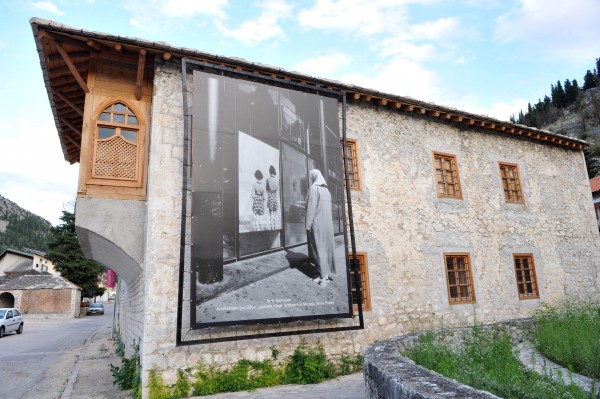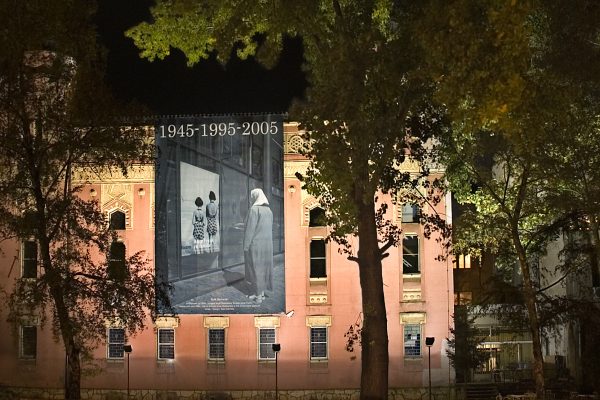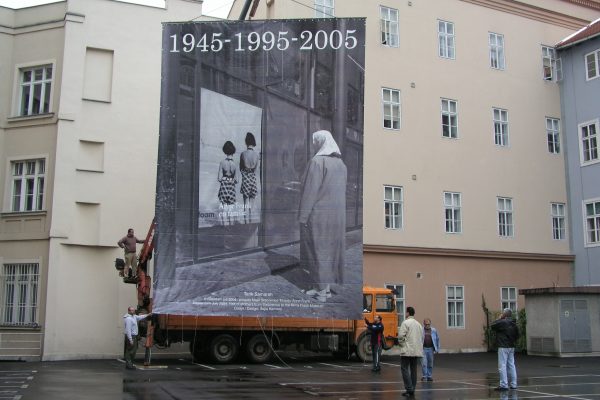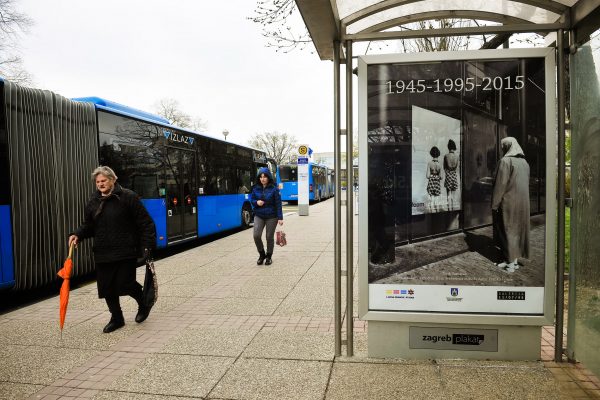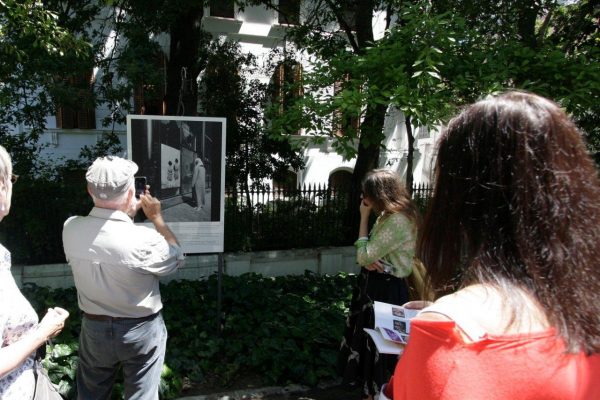This year marks the 25th anniversary of the genocide in Srebrenica.
In 1995, in Bosnia and Herzegovina, in the midst of Europe, the ongoing and systematic crimes reached their abhorrent heights through the crime of genocide committed against the population of Srebrenica, a small town in Eastern Bosnia. In less than a week more than 8000 Bosnian Muslims were exterminated solely for being of different ethnicity and bearing different names. The Srebrenica genocide was committed on the very threshold of the European civilization, with the entire international community observing, and the world hardly caring at all.
Fifty years have passed before the Srebrenica genocide, Auschwitz was liberated and the world said never again.
We are remembering Srebrenica this year by evoking memories of the Holocaust, but also by recognizing the very same patterns of discrimination that lead to unspeakable crimes.
And yet the violence still occurs every day, in all ages and knowing no boundaries.
In 2004 Tarik Samarah photographed a mother from Srebrenica standing and looking at the photo depicting Anne Frank and her sister. The girls in the photo have their backs turned and the focus of the mother is not apparent to the observer. The European contemporary history and its restless narratives are symbolically united in this photograph. Knowing how easy it is to be pushed beyond the limit of what is considered civilization, it becomes impossible not to ask who will be observed next and whom will we remember in the unknowable future and the unfathomable present? Will there be someone or is someone already there to observe our backs in the same solemn manner?
Background
At the height of the vicious Bosnian War, in 1993, the UN Security Council adopted its Resolution 819, placing Srebrenica, a small town in Eastern Bosnia and Herzegovina, under the protection of the international peace forces. The Resolution stopped the takeover of Srebrenica by the Army of Republika Srpska and demilitarized the area, designating it as a UN-protected area, and this was a temporary rescue of some 40,000 Muslim refugees from Eastern Bosnia. After having been expelled from other occupied towns and villages of the area, they found refuge in Srebrenica. Despite the UN protection, the Army of Republika Srpska still treated Srebrenica as a legitimate military target, shelling it from time to time and constantly blocking aid convoys, even after two years of tentative truce and international protection. Two years after the signing of the Security Council Resolution, on the 6th of July 1995, an all-out attack was launched. On the 11th of July 1995, the Republika Srpska troops led by General Ratko Mladić entered the town. General Mladić made a triumphant statement in front of TV cameras, stating that he had finally entered the “Serb Srebrenica” and that “time has finally come for revenge against the Turks”. His words stated a precise ideological narrative underlying the crime. The events that unfolded in the coming days were defined by the International Court of Justice in The Hague as a crime of genocide.
The military operation entitled “Krivaja 95” resulted in monstrous killings of more than 8,000 Bosnian Muslims, mainly men, but also women and children. To this day, the exact number of confirmed deaths has reached 8,372.
The killings were systematic, well organized, and quick, with no possibility for the demilitarized Bosnian Muslim forces to offer any resistance – but they were also with no response from the international community, first and foremost from the Dutch Battalion, assigned to the Srebrenica enclave. Although the international public knew about the events in Srebrenica as they were happening, the international community did not react and the NATO forces failed to send the air support they had promised.
Subsequent investigations and DNA analyses revealed that during the summer and autumn of 1995, the bodies of men and women who had been executed were exhumed from the primary mass graves and moved to other, hidden locations. Remains of the victims were found in primary, secondary, even tertiary mass graves. The process of exhumation and identification of victims continues to this day.
A photo-historical mise en abyme: mother of Srebrenica outside the Anne Frank House
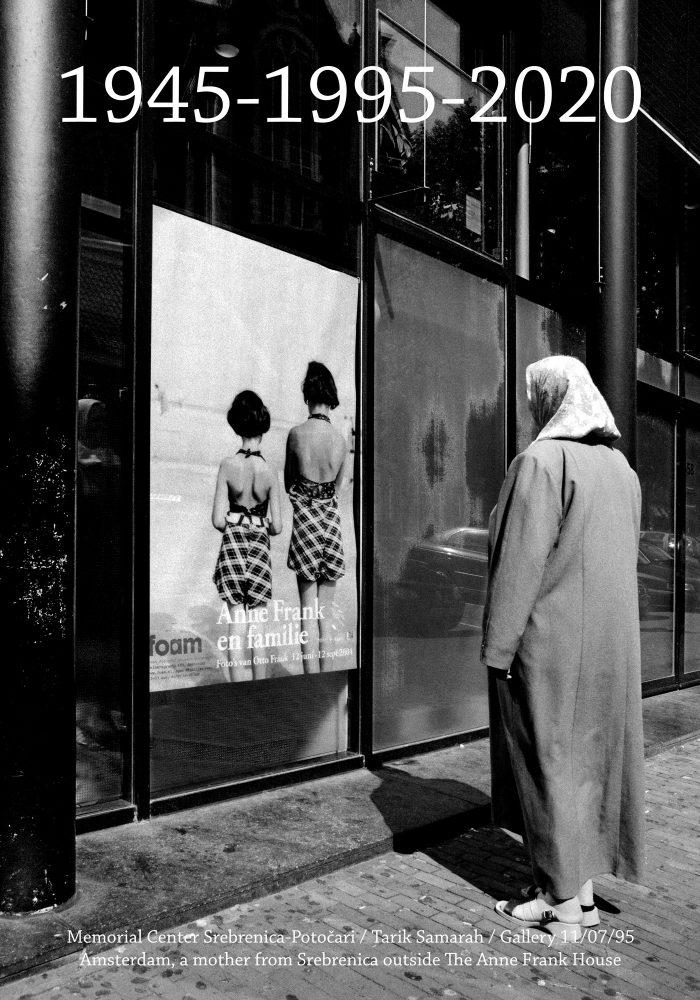
Mise-en-abyme/ mise en abîme: A concept taken from art theory, referring to the inset-frame structure. A frame and its inset can be called a mise-en-abyme structure if the framed element shows points of similarity to the frame. In narrative, one can speak of mise-en-abyme if an embedded story shares plot elements, structural features or themes with the main story and this makes it possible to correlate plot and subplot.” (Fludernik, 2009: 156). “A “mise en abyme”: a series of apparently endlessly overlapping enclosed networks of conceptual or structural spaces which form a kind of labyrinth leading to a shifting, ever unattainable nucleus or centre.” (Cardwell, 1989: 271)
In 2004 photographer Tarik Samarah took a photo of a mother from Srebrenica standing and looking at the photo depicting Anna Frank and her sister. The photograph was taken by Otto Frank, their father, on the beach in The Hague. The main aim of the photographer was to point at two horrific crimes against religious minorities in Europe in the 20th century – one against Jews in 1945 and the other against Bosniak Muslims in 1995.
The girls in the photo have their backs turned and the focus of the Srebrenica woman is also evading the observer, being concentrated on Anna Frank and her sister. In the same way that the mother from Srebrenica is focused on the past symbolized by Anna Frank, our view of this photo is attracting the cyclical repetition of the history of evil. In this moment, more than ever before we can wonder: will someone, sometime, observe us from behind in the same way.
The numbers, evidence, verdicts are not always able to communicate the experience of absolute inhumanity which is produced by the Srebrenica genocide and similar crimes. In contrast to ordinary factual information, photography and art, in general, have the ability to present individualized experience of one historical event. Photography is a selective return to the past and it has the ability to represent the past in its fullness. Susan Sontag wrote that one should feel obliged to think about what it means to look at photographs that capturing pain, about the capacity to assimilate what they show. And there lies the power of photography – in its ability to directly confront the spectator with a moment that occurred in the past, in its ability to produce a witness.
What you can do?
Memorial Center Srebrenica – Potočari and Gallery 11/07/95 are inviting all museums, galleries, cultural, and other similar institutions to take action and take part of this year’s commemoration of the Srebrenica genocide.
We are hereby proposing an artistic intervention to mark this important anniversary which would consist of installing/exposing artwork “1945 -1995-2020” made by Bosnian photographer Tarik Samarah. The purpose of the installation would be to commemorate these two events (Srebrenica genocide and Holocaust), but also to offer a universal message of the great potential the art has in preventing further conflicts.
The main objective of the proposed art installation is to remind us of the cyclical repetition of the history of wars; to remind of victims of the wars in the former Yugoslavia, to remember the Holocaust victims and to ask the question: is it possible to prevent future crimes, to preclude and timely stop the history of evil from repeating itself?
Our proposal includes one of the following options:
Installation of the artwork “1945 – 1995 -2020” on the exterior or interior of the museum/building in the form of billboard, poster or photo projection (see below examples of the previous installations);
Screening the video “Srebrenica” featuring the photos taken by Tarik Samarah in the aftermath of the genocide:
For more information, contact us via: [email protected]
